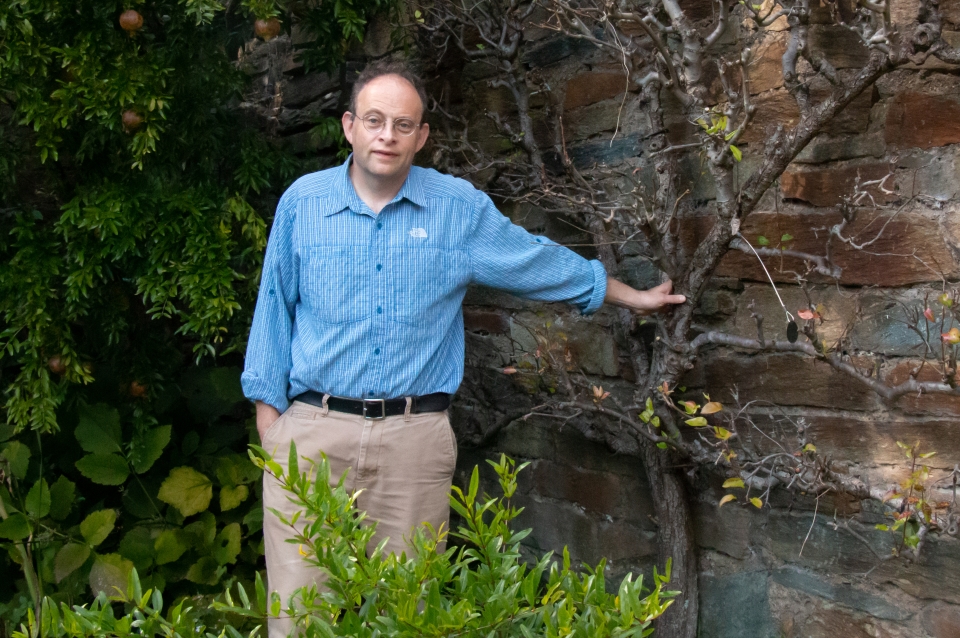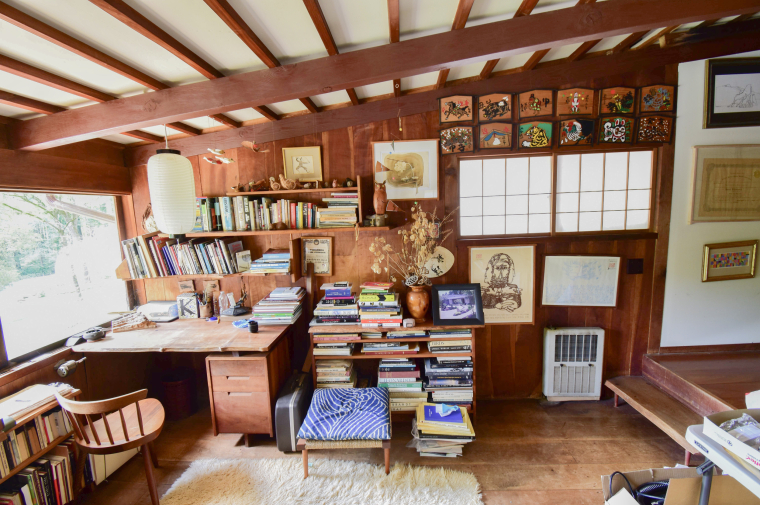December 9, 2021
Stuart Weitzman School of Design
102 Meyerson Hall
210 South 34th Street
Philadelphia, PA 19104
Get the latest Weitzman news in your Inbox
Areas
Tags
Aaron Wunsch, Associate Professor in Historic Preservation, is spending his Fall 2021 sabbatical as a fellow in Garden and Landscape Studies at Dumbarton Oaks. His research report, “Separate Sanctuaries,” explored the rural cemetery movement in antebellum Philadelphia.
This post was written by May Wang, and first appeared on the Dumbarton Oaks blog.
What was the rural cemetery movement and its significance in the nineteenth century?
The focus of my current work is Philadelphia’s contribution to the so-called rural cemetery movement. Scholars usually trace the movement’s roots to the foundation of Père Lachaise Cemetery in Paris in 1803, and later in America to Mt. Auburn Cemetery, both of which are typified by winding paths, varied topography, and lush, romantic plantings. I’m arguing that Philadelphia permutations from around 1850 grew out of a set of values that centered on security, permanence, and family rather than the set of physical, aesthetic criteria we now tend to think of as defining a rural cemetery. A combination of the desire to reform burial for health reasons and an interest in personal, familial, and historical memory—and, to some extent, a commercial interest in a new kind of enterprise separate from the church—created cemeteries that encapsulated the fracturing urban society of the time.
This study of cemeteries in Philadelphia forms part of a larger project looking at changing attitudes toward death and burial alongside changes in the real estate market and landscape design. I’m looking at how the rural cemetery movement, which we have so far treated as an isolated phenomenon, is intertwined with how cities evolved physically, socially, and environmentally in the nineteenth century.
What was particular about rural cemeteries in Philadelphia?
In an 1849 article in his journal, The Horticulturist, landscape gardener and tastemaker A. J. Downing mentions that Philadelphia had around twenty rural cemeteries as of 1850, suggesting contemporaries like Downing understood “rural cemeteries” to encompass more sites than standard scholarship does today. I am focusing on a set of cemeteries that emerged in the late 1840s with common physical traits, including a grid-based layout, a big gateway, a high perimeter fence, and crucially, the family lot. This was a piece of ground that could be purchased for intergenerational burial, which was important as the family began to cohere as an emotional unit in America around this time, and which conferred a sense of security and ownership. Among other things, ownership helped offset fears of body-snatching that were prevalent at the time.
Lots were arranged in a grid, a landscape design concept that in the early nineteenth century was understood as a unifying and equalizing mechanism for the American city or even the nation as a whole. The pieces were interchangeable and everyone—in theory—had an equal stake in it. By 1850, many different groups, especially historically marginalized groups like Black and Jewish Americans, were applying the gridded landscape on a smaller scale, attempting to embody similar ideals of egalitarianism and equal distribution within the confines of private societies and organizations. This was the case for Olive Cemetery, a Black cemetery dedicated by Frederick Douglass that was intentionally gridded. To ensure no one was given preferential treatment, after you bought into the operation there was a lottery, and you plucked your plot number out of a hat—the plots were theoretically interchangeable and equally distributed among owners.
What does this tell us about social concerns and anxieties in Philadelphia at the time?
By 1850, the language of republicanism was losing some of its unifying power from earlier in the century, and what the grid meant in this is less clear. Organizing land in a grid on a national scale, as envisioned at the end of the eighteenth century, was a product of people like Thomas Jefferson, who thought about it as a way to distribute land among idealized yeomen farmer-citizens of the new republic. But there were obvious limitations to Jefferson’s vision—slavery being just one of them—and this was a moment in American cities and in Philadelphia in particular when foundational ideals were being tested. In some ways it sounds familiar to us in 2021: it was a time of pronounced nativism and racial hatred among white American workers, and people began testing the language of the gridded city and nation on a much smaller scale without giving up on some of the earlier values embedded in it.
The social division of Philadelphia in the 1840s played out in the concurrent fragmentation and proliferation of rural cemeteries. Philadelphia had witnessed violent reactions to developments like abolitionism and Irish immigration, which led directly to the formation of societies and groups like the nativist United American Mechanics. A Catholic rural cemetery formed in 1848, as most rural and local cemeteries up to that point were largely for Protestants, and the United American Mechanics formed a mutual aid society and cemetery not long after. They traced their origins directly to the conflicts in the streets, aiming to create a society that effectively offered a social safety net for working-class white Americans through death benefits and inexpensive grave lots.


 Expand Image
Expand Image

